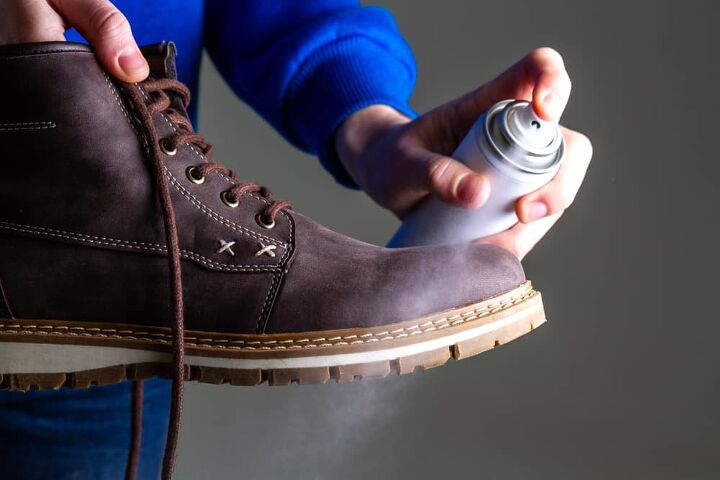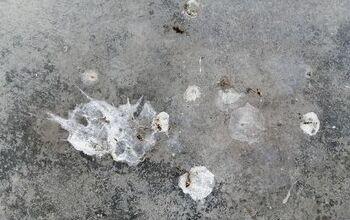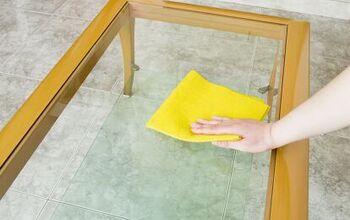How To Clean Nubuck Leather (Quickly & Easily!)

There are a variety of materials out there that present different advantages. We tend to like leather not only for its stylish look but for the fact that it is also quite durable. There is a substance known as Nubuck that is quite similar in nature to not only leather but suede as well.
When it comes time to clean Nubuck, there are a few simple solutions that you can choose between. Warm water and soap will usually get the job done, though you will need to use a soft bristle brush. You can also use a commercial shoe cleaner or even go with a household cleaner to get the job done. Some of it comes down to personal preference as well.
Do You Need Furniture Cleaning Services?
Get free, zero-commitment quotes from pro contractors near you.

What is Nubuck?
Nubuck is actually a leather product. It is quite similar to suede in both texture and appearance. The difference between the two is that Nubuck is not only more durable, but it is more expensive as well.
What is the Difference Between Leather and Nubuck?
On the surface, nubuck and traditional leather can seem like the exact same thing. But when you get down to it, there are subtle differences that make them quite different.
Full-grain leather. During the production of leather, it typically gets split up into multiple layers. The top-grain layer (the outer layer) retains that natural grain of hide. You would find these in high-quality products. The inner layers get embossed with grain pattern and are generally used for less costly products. Full-grain is the result of not splitting layers and is quite durable and heavy.
Nubuck. Nubuck generally has a slightly softer surface that is more reminiscent of suede. The difference is that nubuck offers the same durability and toughness that traditional leather has. That makes it look like suede but it is actually far more durable than suede is.
Cleaning Nubuck
Nubuck gets created when that strong, outer hide of an animal is sanded. The sanding creates a velvety feel and appearance in the process. That soft leather gets used in all sorts of products, couches and shoes being the most prevalent. You can clean the material gently without the use of some expensive cleaner to get the job done.
Step 1: Use a Soft Cloth
Begin the process by rubbing down the nubuck using a soft cloth. Make sure that you use back and forth strokes going in different directions as well as a light touch. The soft cloth is not abrasive enough to scratch or create damage on the surface of the material.
Moreover, using a soft cloth will remove loose dust or dirt and will actually restore the nap of the furniture or clothing that you are working on. Quick note: it is a good idea to have a soft cloth on hand for a variety of reasons. You will come to need one at some point in time.
Step 2: Looking for Stains
After wiping the nubuck down with a soft cloth, give it a good examination. You are looking for dried stains or spots in particular. With proper care, nubuck is actually quite resistant. Still, it is normal to find small stains here and there.
Should you find a stain, use an unwanted toothbrush to do the job. The bristles are just soft enough to treat the nubuck with care yet are sturdy enough to remove the stain. Just make sure that you apply minimal pressure. Getting too aggressive could potentially cause harm to the fabric in the process.
Step 3: White Vinegar
If you do not have white vinegar in your home, you should go out and get some immediately. Even if you have no immediate use for it, that white vinegar will come in handy at some point. It is one of the most effective, versatile home cleaning solutions out there.
Use a cotton swab and dip it into the white vinegar. Then, rub the cotton swab into the wet or dry stains on the surface. Make sure that you properly saturate the area so that the white vinegar can properly break down the stain for removal.
Step 4: Wipe Away the Vinegar
After treating the stain or wet spot with vinegar, it is time to wipe it away. Use a soft cloth to treat this area for all of the reasons mentioned above. Make sure that the smell of vinegar is also not too persistent as that can be an aggressively strong smell to contend with.
When you are done wiping down the area, give it time to air-dry completely before you use it again. This should also give the vinegar fumes a chance to dissipate.
Step 5: Apply a Protectant Spray
Getting a stain or wet spot out of nubuck is just one part of the problem. The next question revolves around how you keep those stains and spots from coming back. Sure, basic common care will go a long way, but a protectant spray will do wonders.
Apply the protectant spray onto the piece you wish to protect. The great thing about these sprays is that they can protect shoes, couches, and any other type of nubuck product from stains. Just remember to reapply the protectant spray every six months or so to ensure that it remains strong and intact.
Step 6: Using a Leather Degreaser and Leather Cleaner
Some stains are tougher than others. Shoes tend to accumulate a wider array of stains than furniture does. So, if your nubuck shoes have picked up one of those tough substances, don’t worry. There is a solution.
Oily stains. For the most part, you can find oily stains on upholstery headrests and jacket collars. When using a leather degreaser, you will likely be using some sort of aerosol spray. Simply spray the degreaser onto the stain and give it about an hour to work.
As it stands, the leather degreaser will turn into a powder. This is because it is soaking up the oil and trapping it. When the time has passed, you can use a sponge to run that powdery substance away and follow it up by using a leather cleaner. If the problem persists, rinse and repeat until it goes away.
Step 7: Ink Lifters (for Ink Stains)
Ink is another possible contaminant for nubuck. Ink tends to be particularly tricky because it can stain rather quickly and even smear to make the effect that much worse. Thankfully, there are ink lifters that can be used for ink stains.
Clean as soon as possible. When dealing with ink stains, it is of the utmost importance that you clean the stain as quickly as possible. Ink will start to set after about 6 hours, so you have a little bit of time to react.
Using ink lifter. Generally speaking, ink lifter comes in a tube (think of how lip balm comes). Just rub in the ink lifter over top of the ink stain until the stain has been completely covered. Using a nubuck cloth in tandem with leather cleaner, wipe away what is left of the stain. The stronger the stains will likely require reapplication to get the job done completely.
Step 8: Sanding the Truly Tough Stains
For nubuck work boots, it is common to have particularly tough and difficult stains staring you down. If nothing works to this point, don’t panic. There is one more thing that you can try: sanding the stains away.
- Use sandpaper or a suede block. Think about it like this: nubuck is created through the sanding of cowhide. That means it can withstand sanding when it comes to cleaning purposes. Make sure that your sandpaper or suede block is clean before you start sanding. Rub vigorously until the stain is removed. If there is just one stain, remain on that spot and don’t venture elsewhere.
- Heavier soil. Should your nubuck surface be soiled all over, you will want to sand the entirety of the surface. Doing this will not only eliminate the stains, but it will also give the surface a more even look and can even restore the nubuck to looking practically new.
- Nubuck brush. If you do decide to sand the nubuck, use a nubuck brush along the way. This kind of brush is great for removing residue as you work. Sanding will create a very fine layer of dust that will build-up on the leather. Using the nubuck brush keeps the surface clean and clear as you work.
Do You Need Furniture Cleaning Services?
Get free, zero-commitment quotes from pro contractors near you.

Related Questions
Does Nubuck Get Ruined in the Rain?
Much like leather, nubuck is actually water-resistant. That said, it is only resistant to small amounts of water, so don’t go sticking your nubuck in a pond. You can use a waterproofing spray to further protect them, but the same rules apply.Suede, which nubuck is similar to, can be ruined by water quite easily. It often results in a variety of stains to show up on the surface, so wearing suede in the rain is not a good idea. Even the smallest of rain showers can wind up ruining a good pair of suede shoes.
Related Guide

Ryan Womeldorf has more than a decade of experience writing. He loves to blog about construction, plumbing, and other home topics. Ryan also loves hockey and a lifelong Buffalo sports fan.
More by Ryan Womeldorf



























